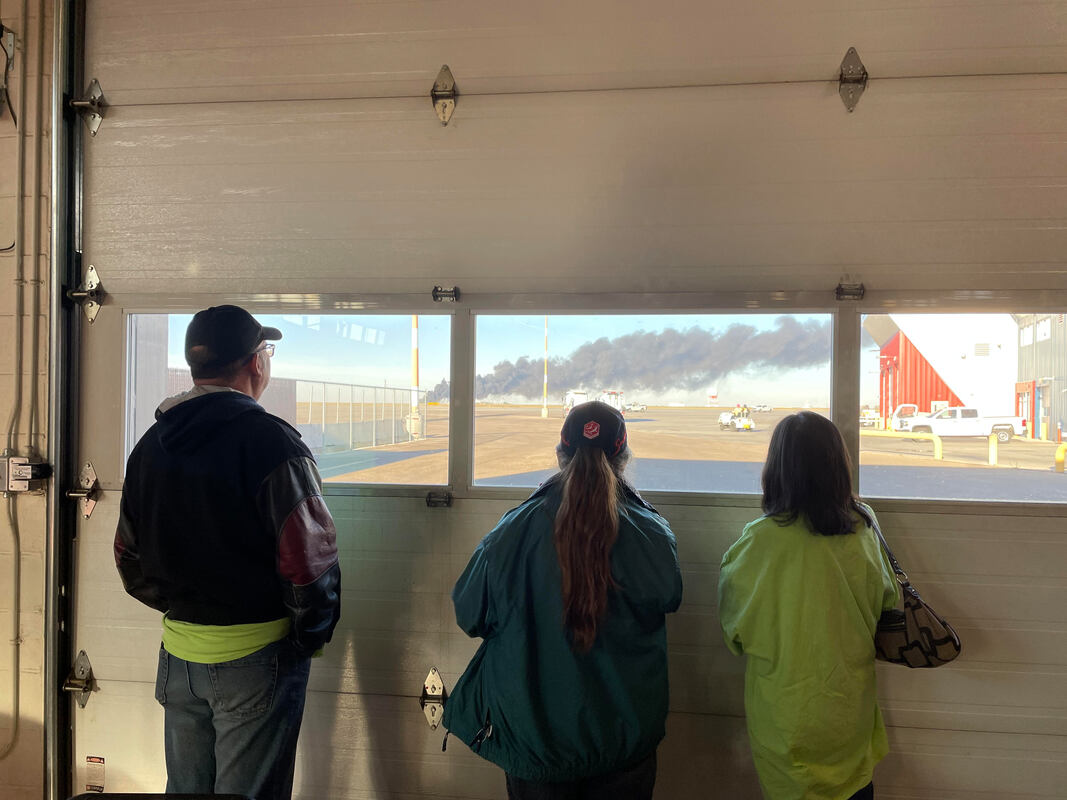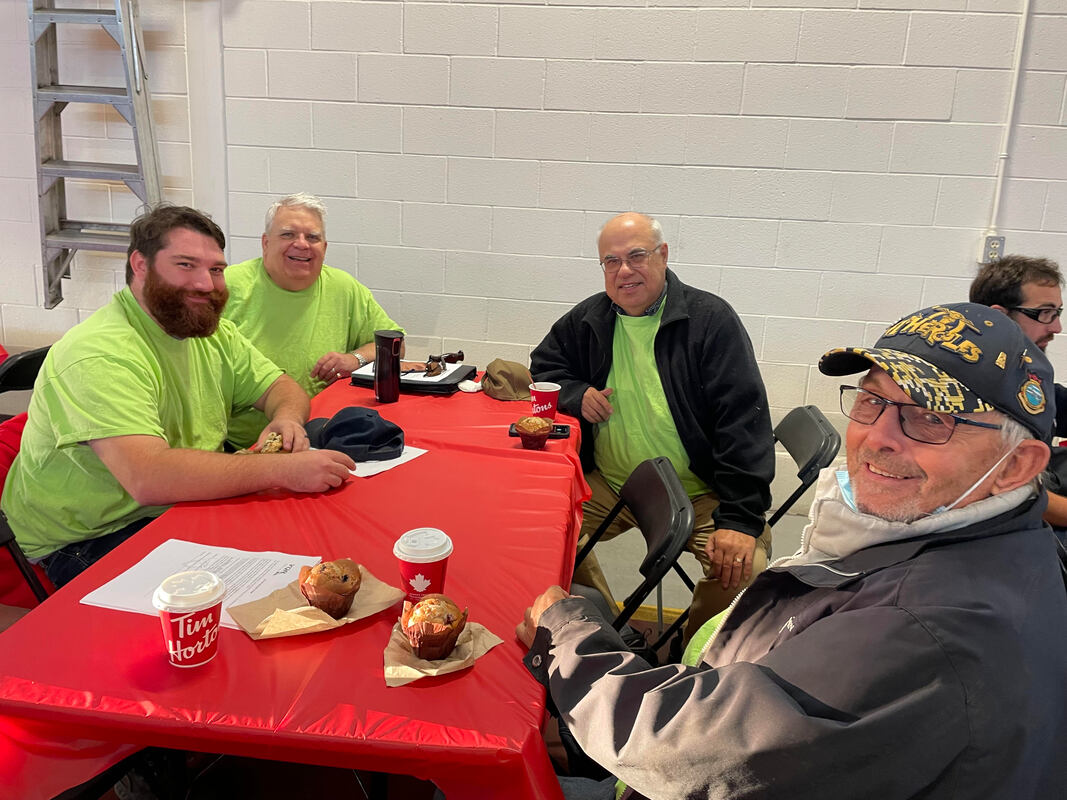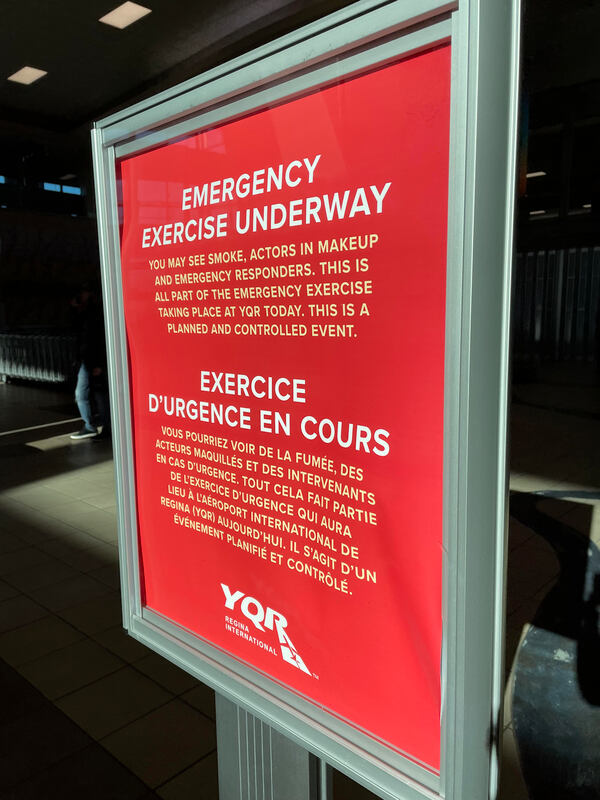Exercise Broken Arrow
Report and photos by Will Chabun,
Regina Chapter Newsletter Editor
posted November 2022
Regina Chapter Newsletter Editor
posted November 2022
Emergencies at the airport when aircraft crash are no joke, and sometimes the best way to stay ready and prepared is to practice the scenario.
Two massive airport fire trucks, their diesel engines growling, pulled away from the fire station and headed towards the inky black smoke on the western horizon. Inside the station, eight members of the Regina chapter of the Canadian Aviation Historical Society watched– and sipped coffee.
Our time would come.
We were watching the start of Exercise Broken Arrow; a full-scale disaster exercise the Regina Airport is required to hold every two years.
Two massive airport fire trucks, their diesel engines growling, pulled away from the fire station and headed towards the inky black smoke on the western horizon. Inside the station, eight members of the Regina chapter of the Canadian Aviation Historical Society watched– and sipped coffee.
Our time would come.
We were watching the start of Exercise Broken Arrow; a full-scale disaster exercise the Regina Airport is required to hold every two years.
Exercise “actors” watch the plume of smoke that marked the opening of Exercise Broken Arrow.



